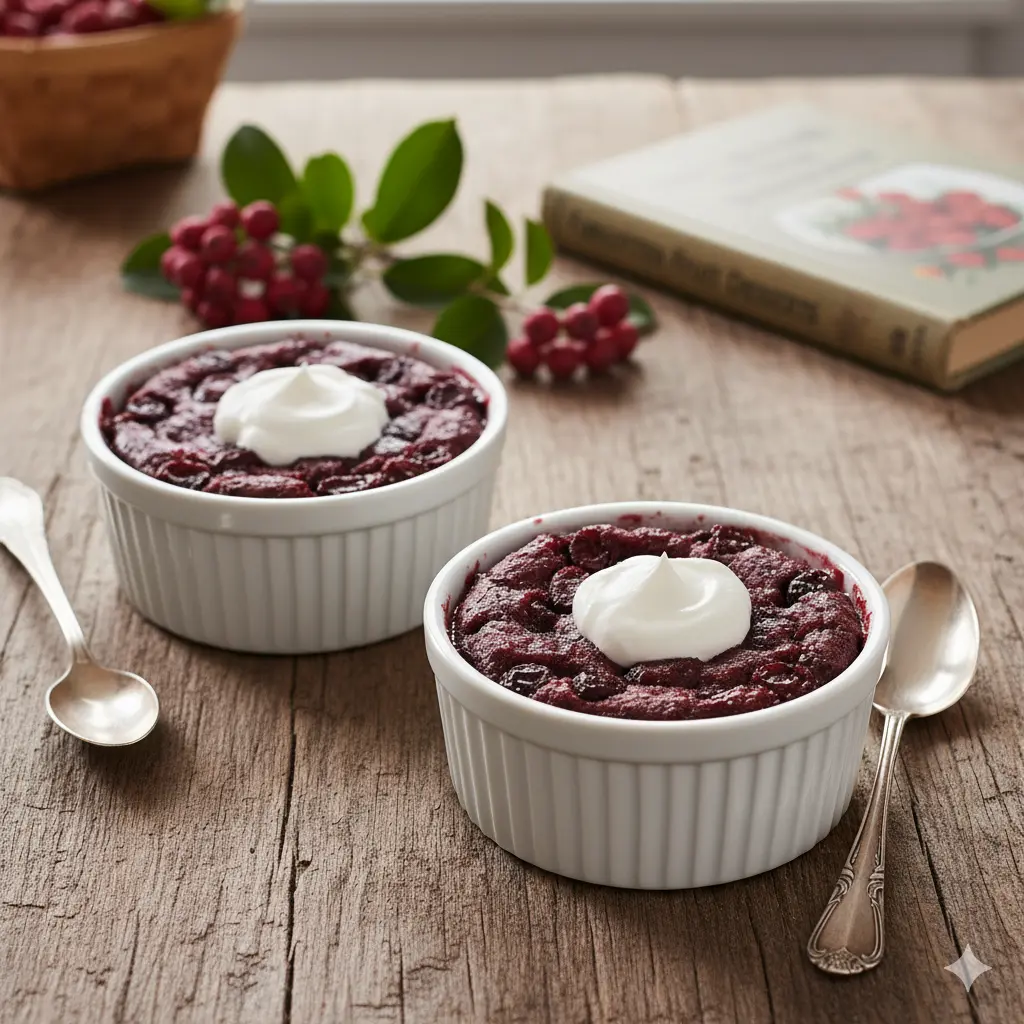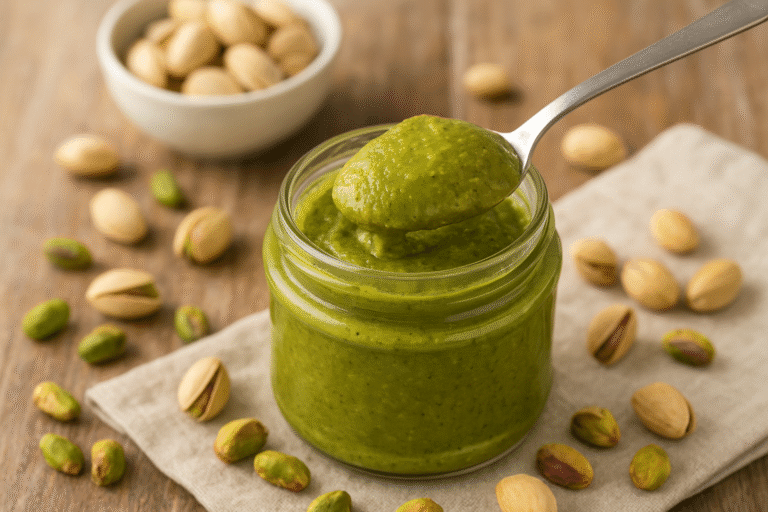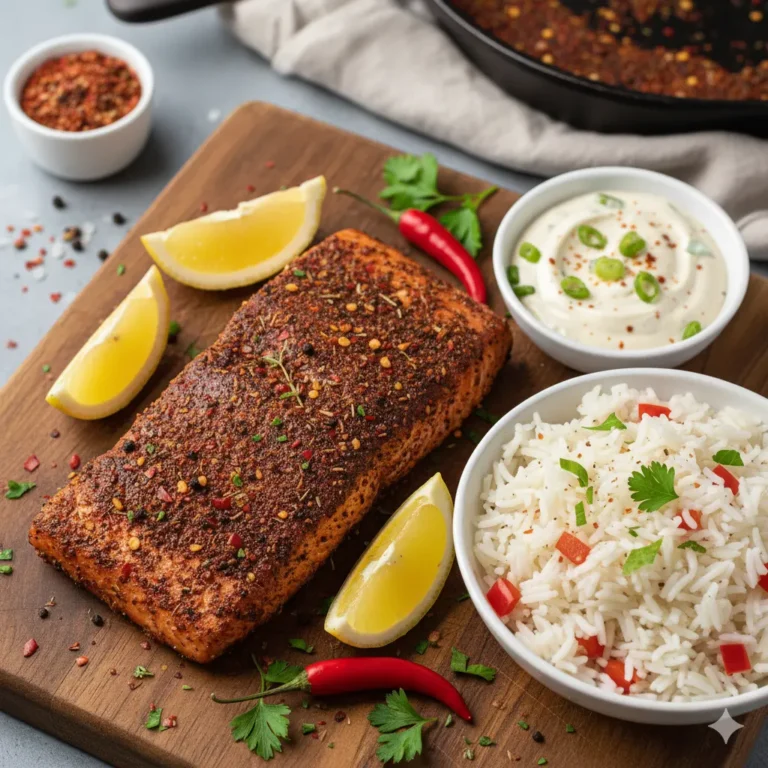Chokecherry Pudding
Chokecherry Pudding recipe : The Traditional Native American Dessert That’s Been Secretly Perfecting Gut Health for Centuries
Introduction: Could This Forgotten Wild Berry Pudding Hold the Key to Healthier Desserts?
Did you know that chokecherries contain 1,500 mg of antioxidants per 100 grams—nearly triple the amount found in blueberries? Yet this nutrient-dense wild fruit remains largely forgotten in modern kitchens. Enter chokecherry pudding, a traditional Native American dessert that’s experiencing a remarkable renaissance among foragers, health-conscious bakers, and culinary historians alike.
This chokecherry pudding recipe transforms tart, astringent wild berries into a silky, sophisticated dessert that balances sweet and tangy notes with remarkable depth. Whether you’ve foraged your own chokecherries or discovered them at a farmers’ market, this recipe honors centuries-old traditions while adapting perfectly to contemporary kitchens. Unlike conventional puddings laden with artificial ingredients, this version relies on the natural pectin in chokecherries and simple, wholesome components to create a dessert that’s both nostalgic and nutritious.
The beauty of chokecherry pudding lies in its versatility—it works equally well as a standalone dessert, a topping for vanilla ice cream, or even as a unique filling for pastries. The process might seem daunting if you’re unfamiliar with processing wild berries, but this comprehensive guide breaks down every step, ensuring your first attempt yields restaurant-quality results.
Ingredients: What You’ll Need for Authentic Chokecherry Pudding
Creating the perfect chokecherry pudding requires quality ingredients and proper preparation. Here’s everything you’ll need:
For the Chokecherry Base:
- 4 cups fresh or frozen chokecherries (about 1½ pounds with stems removed)
- 3 cups filtered water
- 1 cup granulated sugar (or ¾ cup honey for a deeper, more complex sweetness)
- ¼ teaspoon fine sea salt (enhances the fruit’s natural flavor profile)
For Thickening:
- ½ cup cornstarch (or ⅓ cup arrowroot powder for a clearer, glossier finish)
- ½ cup cold water (for creating the slurry)
Optional Flavor Enhancers:
- 1 teaspoon pure vanilla extract (adds warmth and rounds out the tartness)
- ½ teaspoon ground cinnamon (complements the berry’s natural spice notes)
- 2 tablespoons fresh lemon juice (brightens the overall flavor)
- 1 tablespoon unsalted butter (creates a luxurious, velvety mouthfeel)
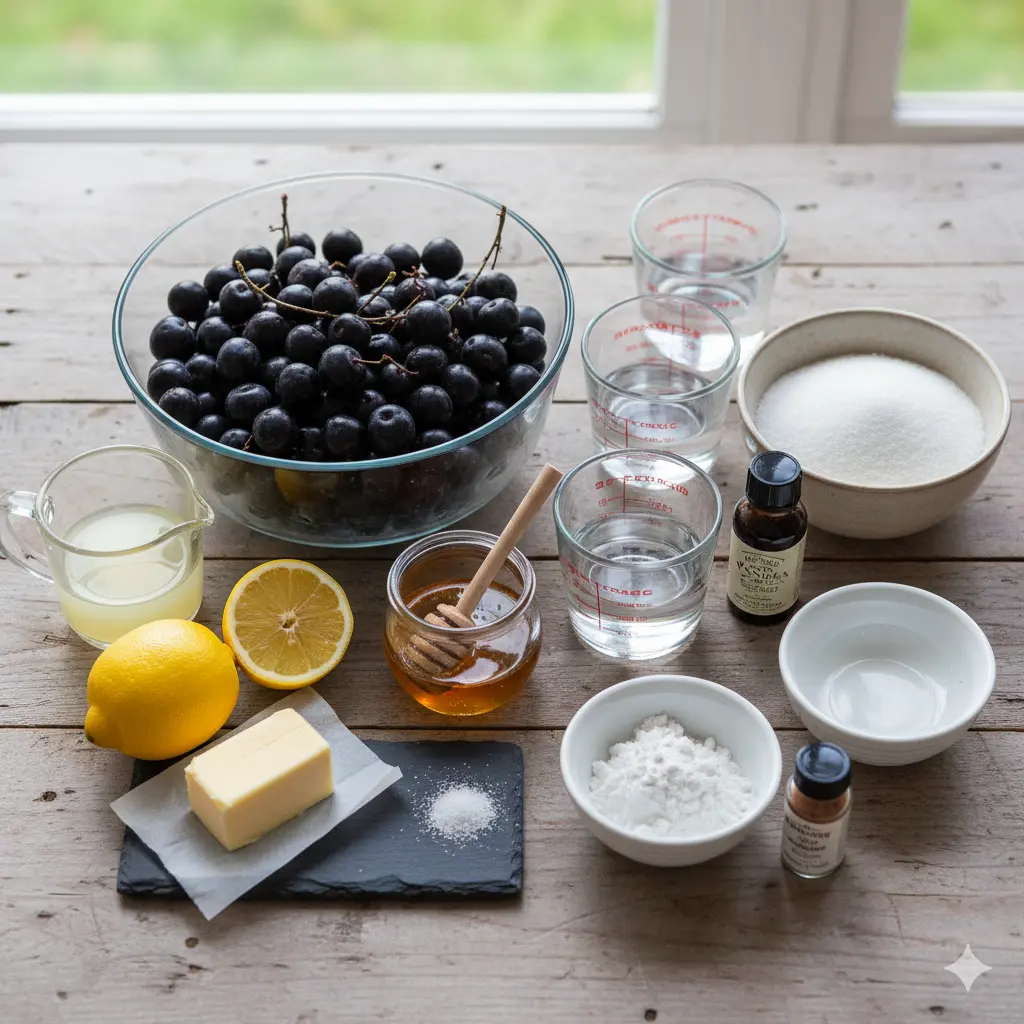
Substitution Notes: If chokecherries are unavailable, you can substitute with a combination of 2 cups tart cherries and 2 cups wild blueberries, though the flavor profile will be distinctly different. For a lower-glycemic option, replace sugar with coconut sugar or monk fruit sweetener (use ¾ the amount). Tapioca starch can replace cornstarch at a 1:1 ratio for those avoiding corn products.
Timing: How Long Does This Traditional Recipe Take?
Understanding the time commitment helps you plan accordingly:
- Preparation Time: 20 minutes (including berry cleaning and ingredient measuring)
- Cooking Time: 35-40 minutes (simmering and thickening)
- Cooling Time: 2-3 hours (for proper setting and optimal texture)
- Total Time: Approximately 3 hours from start to finish
This timeline represents about 30% less active cooking time than traditional stovetop puddings that require constant stirring. The majority of time is passive cooling, allowing you to multitask while your pudding sets to perfection.
Step-by-Step Instructions: Crafting Your Perfect Chokecherry Pudding
Step 1: Prepare and Clean Your Chokecherries
Begin by thoroughly sorting through your chokecherries, removing any stems, leaves, or damaged berries. Rinse them under cool running water in a colander, gently agitating to remove any debris. Pat them dry with a clean kitchen towel. This meticulous preparation ensures no unwanted bitterness from stems infiltrates your final pudding.
Pro Tip: If using frozen chokecherries, there’s no need to thaw them first—they’ll break down beautifully during cooking and actually release their juices more readily when added frozen to hot liquid.

Step 2: Create Your Chokecherry Juice Base
In a large, heavy-bottomed saucepan (4-quart capacity minimum), combine the cleaned chokecherries with 3 cups of filtered water. Bring the mixture to a rolling boil over medium-high heat, then reduce to a gentle simmer. Cook uncovered for 20-25 minutes, stirring occasionally and using a potato masher or wooden spoon to gently crush the berries as they soften.
The berries will release their deep burgundy color and characteristic aroma—slightly tart with notes of almond from the pits (which is completely safe when cooked). You’re aiming for the berries to be completely broken down and the liquid to have reduced by about one quarter.
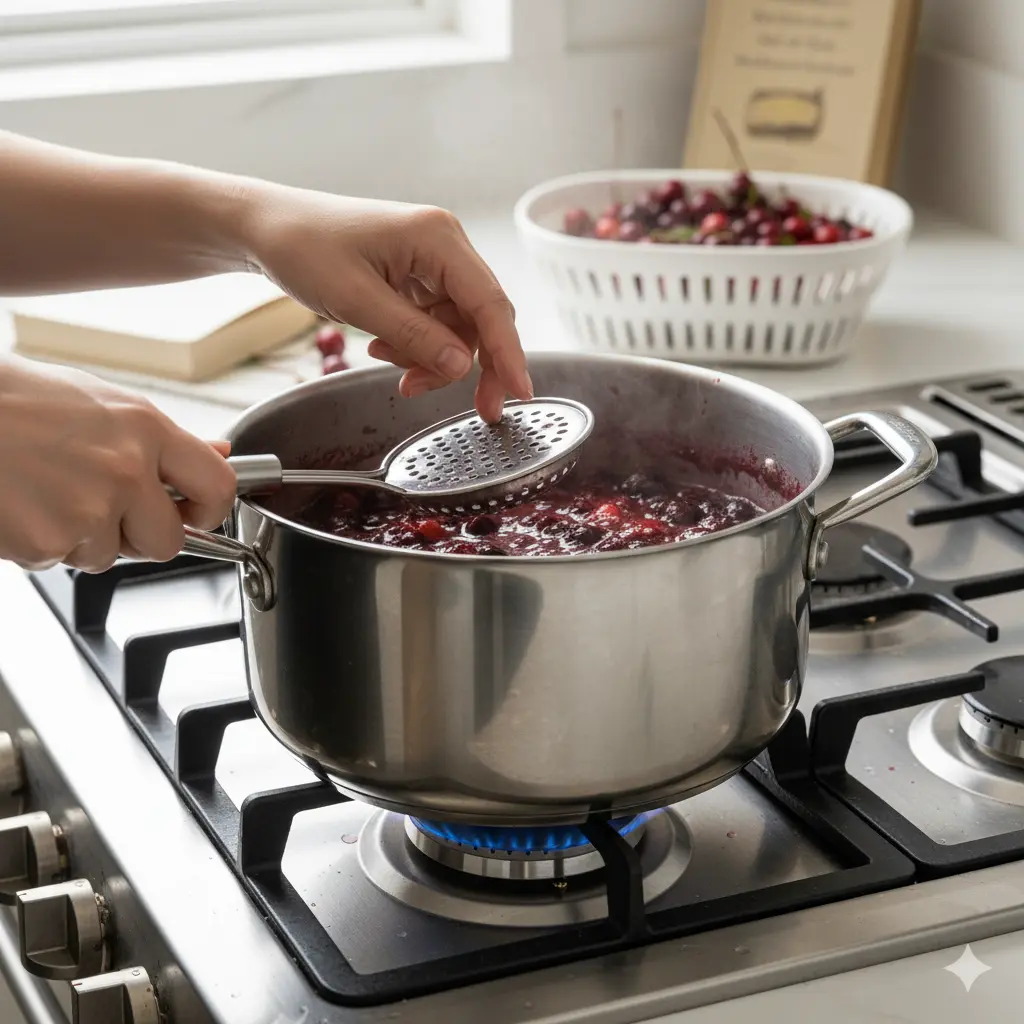
Step 3: Strain Your Chokecherry Liquid
Set a fine-mesh strainer or cheesecloth-lined colander over a large bowl or second saucepan. Carefully pour the hot chokecherry mixture through the strainer, pressing firmly on the solids with the back of a ladle or spoon to extract maximum juice. You should yield approximately 3 to 3½ cups of deep purple-red chokecherry juice.
Important: Discard the solids (including all pits) completely. Chokecherry pits contain amygdalin, which can convert to cyanide if consumed in large quantities. The cooking process makes the juice perfectly safe, but the pits themselves should never be eaten.

Step 4: Sweeten and Season Your Base
Return the strained chokecherry juice to your cleaned saucepan. Add the sugar and salt, stirring over medium heat until the sugar dissolves completely (about 2-3 minutes). This is the moment to taste and adjust sweetness—chokecherries vary in tartness depending on harvest time and variety, so some batches may need an additional 2-3 tablespoons of sugar.
If using vanilla extract, cinnamon, or lemon juice, add them now and stir to incorporate fully. The kitchen will fill with an intoxicating aroma reminiscent of wild berry pie with subtle almond undertones.

Step 5: Create Your Cornstarch Slurry
In a small bowl, whisk together the cornstarch and ½ cup cold water until completely smooth with no lumps visible. This slurry technique prevents clumping and ensures even thickening throughout your pudding. Let it sit for 1-2 minutes—you’ll notice the cornstarch settling to the bottom, so give it one final whisk right before adding it to the hot liquid.

Step 6: Thicken Your Chokecherry Pudding
Ensure your chokecherry juice is at a gentle simmer (not a rolling boil, which can prevent proper thickening). Slowly pour the cornstarch slurry into the simmering juice while whisking continuously in a circular motion. The transformation happens quickly—within 2-3 minutes, you’ll notice the liquid thickening substantially and becoming glossy.
Continue cooking for an additional 3-4 minutes, stirring constantly to prevent scorching on the bottom. The pudding should coat the back of a spoon and slowly drip off rather than running freely. It will thicken further as it cools, so avoid the temptation to add more cornstarch at this stage.
Step 7: Add Final Touches and Cool
Remove the saucepan from heat. If using butter for added richness, stir it in now until completely melted and incorporated—this creates a luxurious sheen and silky mouthfeel that elevates the pudding from rustic to refined.
Pour the hot pudding into individual serving dishes, ramekins, or a large serving bowl. Press plastic wrap directly onto the surface of the pudding to prevent a skin from forming (unless you enjoy that textural element). Allow to cool at room temperature for 30 minutes, then refrigerate for at least 2 hours until completely set and chilled.
Step 8: Serve and Garnish
Your chokecherry pudding is now ready to serve! The texture should be thick, smooth, and spoonable with a jewel-toned appearance. For an elevated presentation, top with:
- Lightly sweetened whipped cream or coconut cream
- Fresh mint leaves for color contrast
- A sprinkle of crushed graham crackers or shortbread crumbs for textural interest
- Additional fresh berries if in season
- A dusting of powdered sugar for elegant simplicity
Storage Tip: This pudding keeps beautifully in the refrigerator for up to 5 days in an airtight container. The flavors actually deepen and meld over the first 24 hours, making it an excellent make-ahead dessert for gatherings.
Nutritional Information: The Health Benefits Behind This Traditional Treat
Chokecherry pudding offers surprising nutritional benefits compared to conventional pudding desserts:
Per Serving (based on 6 servings):
- Calories: 165 kcal
- Total Fat: 0.3g (0.5% DV)
- Saturated Fat: 0.1g
- Trans Fat: 0g
- Cholesterol: 0mg
- Sodium: 102mg (4% DV)
- Total Carbohydrates: 41g (15% DV)
- Dietary Fiber: 2.1g (8% DV)
- Sugars: 34g
- Added Sugars: 27g
- Protein: 0.8g
- Vitamin C: 18mg (20% DV)
- Vitamin A: 156 IU (3% DV)
- Calcium: 22mg (2% DV)
- Iron: 0.9mg (5% DV)
- Potassium: 198mg (4% DV)

